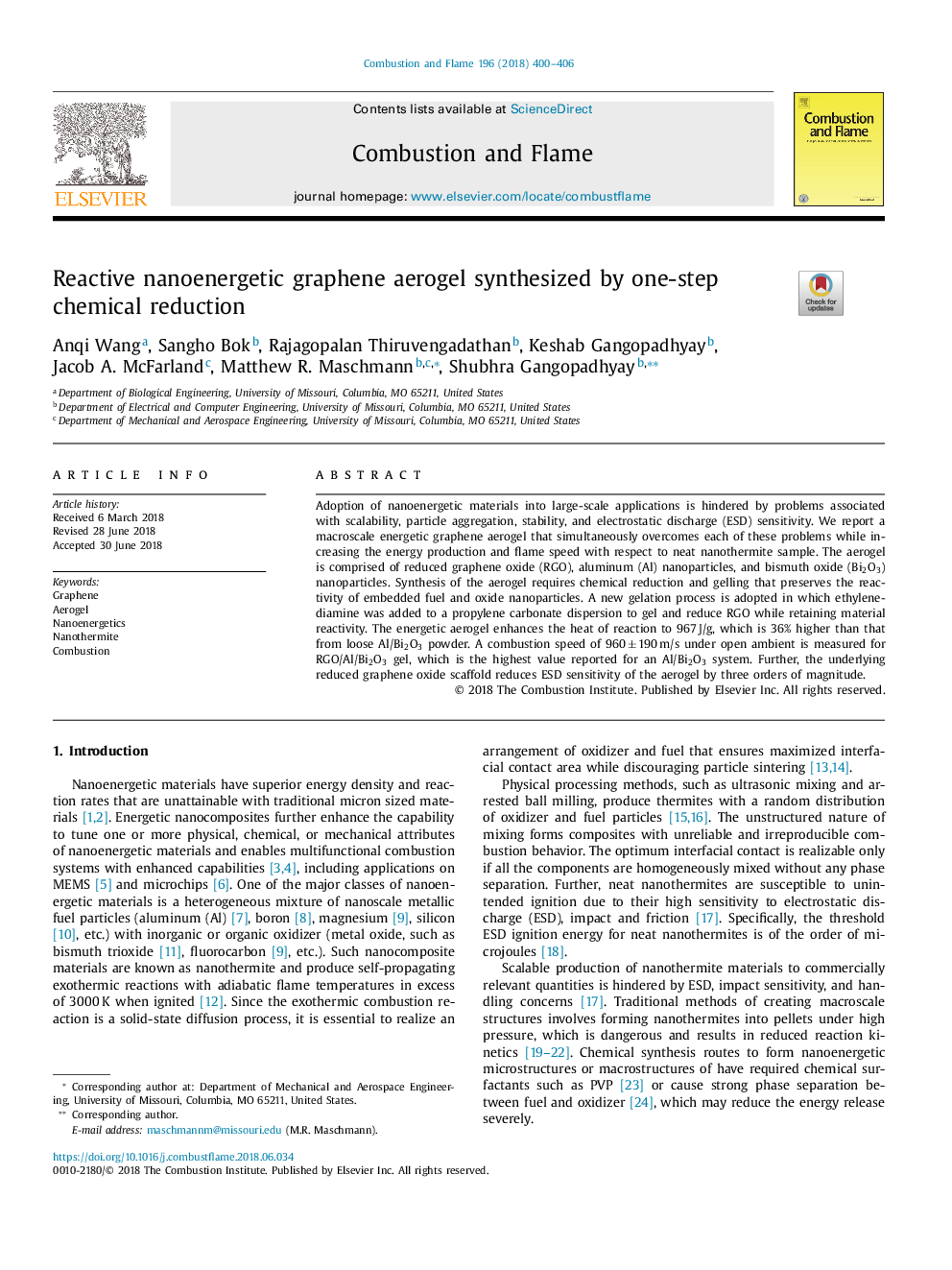| Article ID | Journal | Published Year | Pages | File Type |
|---|---|---|---|---|
| 6593385 | Combustion and Flame | 2018 | 7 Pages |
Abstract
Adoption of nanoenergetic materials into large-scale applications is hindered by problems associated with scalability, particle aggregation, stability, and electrostatic discharge (ESD) sensitivity. We report a macroscale energetic graphene aerogel that simultaneously overcomes each of these problems while increasing the energy production and flame speed with respect to neat nanothermite sample. The aerogel is comprised of reduced graphene oxide (RGO), aluminum (Al) nanoparticles, and bismuth oxide (Bi2O3) nanoparticles. Synthesis of the aerogel requires chemical reduction and gelling that preserves the reactivity of embedded fuel and oxide nanoparticles. A new gelation process is adopted in which ethylenediamine was added to a propylene carbonate dispersion to gel and reduce RGO while retaining material reactivity. The energetic aerogel enhances the heat of reaction to 967â¯J/g, which is 36% higher than that from loose Al/Bi2O3 powder. A combustion speed of 960â¯Â±â¯190â¯m/s under open ambient is measured for RGO/Al/Bi2O3 gel, which is the highest value reported for an Al/Bi2O3 system. Further, the underlying reduced graphene oxide scaffold reduces ESD sensitivity of the aerogel by three orders of magnitude.
Related Topics
Physical Sciences and Engineering
Chemical Engineering
Chemical Engineering (General)
Authors
Anqi Wang, Sangho Bok, Rajagopalan Thiruvengadathan, Keshab Gangopadhyay, Jacob A. McFarland, Matthew R. Maschmann, Shubhra Gangopadhyay,
